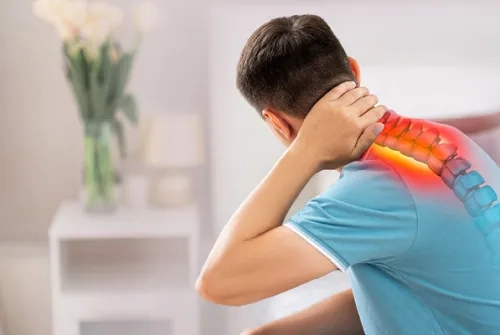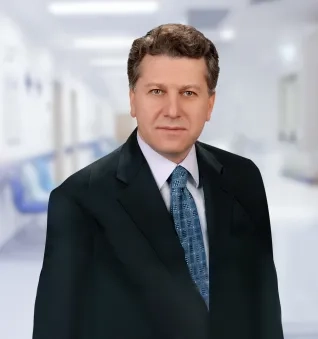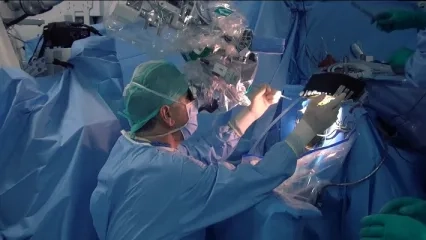Alo Yeditepe
Alo Yeditepe
Narrow Cervical Canal and Myelopathy
Complaints of Patients with Cervical Myelopathy
Spinal stenosis in the neck (cervical) is usually manifested through complaints related to nerve root (radiculopathy) or spinal cord compression (myelopathy). Myelopathy is a spinal cord injury, and advanced myelopathies can result in paralysis. The bony structure that protects the spinal cord and nerve fibers is called the “spinal column.”
The spinal cord and nerve fibers descend along the canal at the center of the vertebrae from the nape of the neck to the coccyx. For the spinal cord and nerves to be present in this canal inside the vertebrae in an unconstraint manner, the canal's diameter should not be below 11 mm. Conditions in which the diameter is below this critical value are called ‘spinal stenosis’ or ‘narrowed canal.’
What are the Complaints?
About half of the patients with cervical myelopathy have neck and arm pain. The most common complaints in these patients are weakness in the arms, loss of sensation in the hands and feet, weakness in the legs and resulting gait disturbance, and clumsiness in the hands, including the inability to button the shirt, inability to open the door with the door handle, and inability to open the jar lid. Moreover, another complaint is urinary incontinence.
In very advanced cases, the patients need support to walk. Movement is sometimes impossible, especially in elderly patients. The progression of all these complaints over time may differ for each patient. The progression of complaints is rapid in some patients while slow in others. Early diagnosis is crucial in this disease group.
Diagnosis of Cervical Myelopathy
“Magnetic resonance imaging” (MRI) is usually used to make a diagnosis. MRI shows the narrow cervical canal and compressed spinal cord in great detail. Computerized Tomography (CT) can be used to better visualize bone structures protruding into the cervical canal. The differential diagnosis of cervical myelopathy from other diseases can be made through electrophysiological tests.
Treatment Options for Narrow Cervical Canal
In mild narrow cervical canal cases, non-surgical methods may be the first treatment option. However, increased weakness and pain in the arms and legs, gait disturbance, or reduction of the width of the spinal canal below the critical level are treated through surgery.
The aim of surgical treatment is to eliminate the pressure on the spinal cord and nerve root (decompression). Metal implants can be applied in advanced stenoses and conditions of slip.
This content was prepared by Yeditepe University Hospitals Medical Editorial Board.
”
See Also
- Causes and Treatment Methods of Cervical Herniated Disc
- What is Parkinson's Surgery?
- Brain / Spinal Cord Spine and Nerve Surgery (Neurosurgery)
- Lumbar Spondylolisthesis (Lumbar Slipped Vertebrae)
- Lumbar Spinal Stenosis
- Spinal Fractures
- Use of Vitamin D in Pregnant Women
- Brain Battery Connecting Parkinson Patients to Life
- Treatment Success in Brain Tumors Also Depends on the Family
- Not All Hand Tremors Are Caused by the Parkinson's Disease
- Do not Fill Your Brain With Junk Food If You Want A Good Memory
- When Does the Spine Require Surgical Treatment?
- Osteoporotic Spinal Fractures Can Cause Bigger Problems If Not Treated Early
- Patient Selection is Important in Parkinson's Surgery
- Canal Narrowing in the Spinal Cord
- Beware If Your Walking Distance Is Decreasing!
Alo Yeditepe




